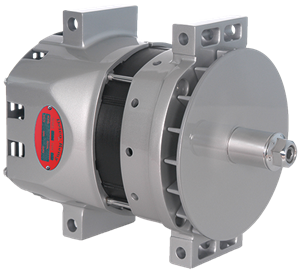
Helping establish a standard for the industry benefits everyone—fleet customers, distributors and manufacturers. It’s one of the reasons BorgWarner’s Bob Jeffries has long been involved with the Technology and Maintenance Council (TMC) of the American Trucking Association.
TMC is charged with developing recommended practices (RPs) for the industry on the maintenance and operations of vehicles. Currently, there are nearly 500 RPs that have been adopted by TMC, including one that was recently spearheaded by Jeffries.
Jeffries—along with BorgWarner’s Mike Bradfield and input from a colleague at Nippon Denso—developed RP 180: Standard for Establishing Alternator Efficiency.
“This RP ensures that, regardless of the manufacturer, we are all testing alternator efficiency to the same standards,” he explains. “It’s an important RP because fuel remains one of the top costs of operating a vehicle.”
With Bradfield’s help, the committee developed an efficiency formula that was based on the MODAC (Mobile Data Acquisition) study. They also established profiles for average line haul trucks as well as traditional Class 8 trucks, so the formula could be adapted to the particular vehicle type.
“This RP doesn’t favor any manufacturer. It is simply a testing standard that ensures end users have a common way to evaluate alternator efficiency,” Jeffries explains. “Efficiency can be a moving target. This RP allows a true apples-to-apples comparison.”
Once adopted by TMC, RPs are commonly used in specifications for the purchase of a vehicle or truck.
“This is an important process because it allows various parts of the industry to come together and work through maintenance issues and establish standards that make the industry better—something we all want.”
As a Silver Spark Plug member of TMC, Jeffries has been recognized for his influence and excellence in the maintenance of commercial vehicles. He’s helped develop four other RPs.